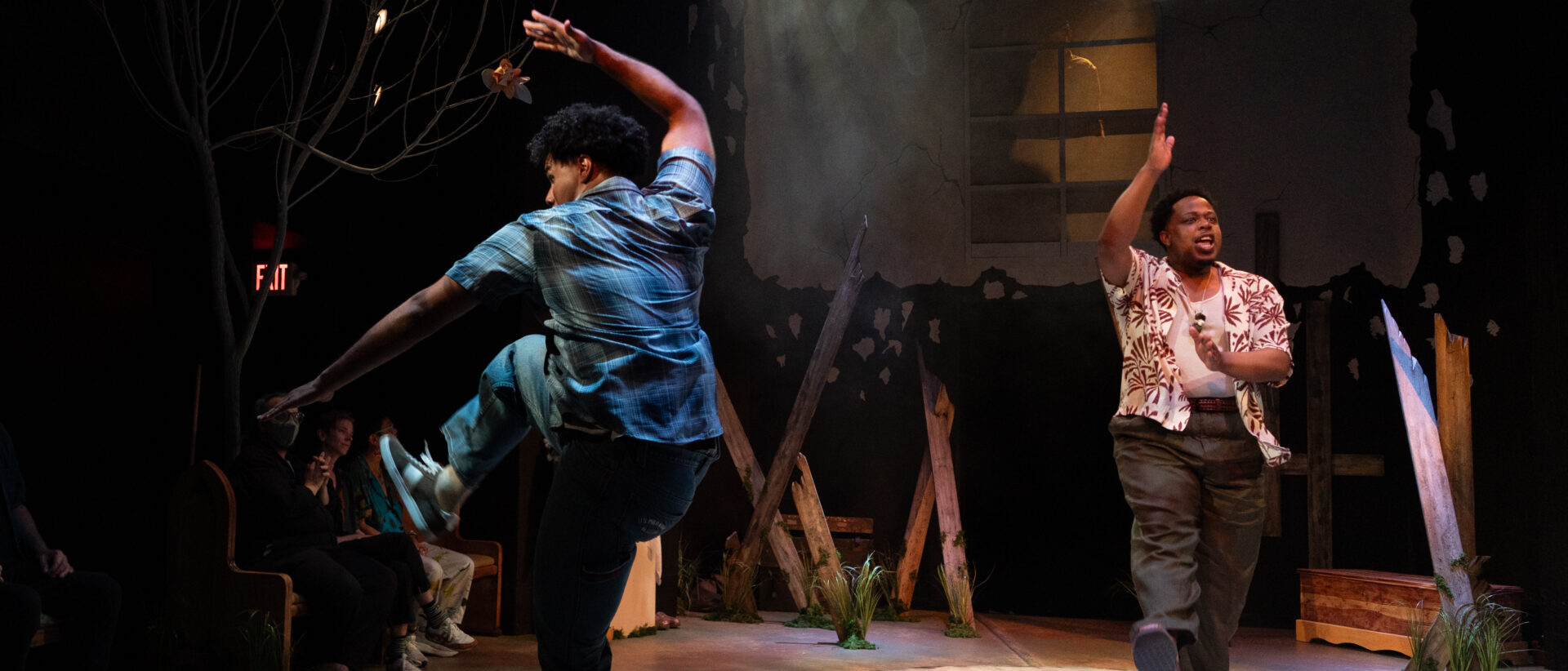director AeJAY ANTONIS MARQUIS
on THE MAGNOLIA BALLET
The Magnolia Ballet is a hymn to survival, a call to embrace the messiness of the human condition, and a reminder that through the flames, we can rise anew
The Magnolia Ballet is a Southern Gothic but also a passion play that confronts the intersections of pleasure and pain, capturing the layered realities of the Black experience. It is a messy, visceral dance of inheritance and resistance, where trauma and hope mingle like the tangled roots of a bayou. This is not a story of clean edges or quiet reckonings but one of fiery collisions, where ancestors loom as both specters and saviors, guiding us toward liberation while carrying the weight of generational curses. Through fire and ash, rebirth emerges—a testament to resilience and the cyclical nature of healing.
At its core, this play gobbles and swallows the audience whole, much like the land it portrays. The swamp, with its howling spirits and murky waters, becomes a character unto itself—alive, dangerous, and unrelenting. The ancestors are not distant here; they are ever-present, living in the walls, the land, and the marrow of the characters’ bones. They are spirit cocoons, simultaneously fragile and indestructible, reminding us of our capacity to break chains that have bound us for centuries.
The complexity of masculine love lies at the heart of this work. Fathers, sons, and friends navigate the razor’s edge between tenderness and violence, fear and vulnerability. Ezekiel V and Z’s relationship, strained by a lineage of unspoken wounds, exposes the rawness of what it means to love and to fail. In Z’s delicate, defiant relationship with Danny, the play wrestles with the messy, beautiful contradictions of love: the longing for connection against the backdrop of inherited hate, the vulnerability of trusting someone who might one day weaponize that intimacy. This is not sanitized love; it is bruised and bleeding, but it is also electric and transformative.
Fear and hope entwine like the mangroves of the bayou, where the ghosts of history never truly sleep. The characters carry the weight of the past, yet their stories pulse with the possibility and realities of something better. The specter of the Mitchell curse—a fire passed through generations—symbolizes both destruction and purification. The act of burning something down is not just an end but a beginning, a violent catharsis that clears space for new growth. Fire becomes a paradox: a tool of oppression and a force of liberation.
This play invites us to sit with the discomfort of history, to see its gnarled roots, and to witness the beauty that persists despite it all. It challenges us to honor the voices of our ancestors while daring to envision a future that defies their limitations. Ultimately, The Magnolia Ballet is a hymn to survival, a call to embrace the messiness of the human condition, and a reminder that through the flames, we can rise anew—reborn, resilient, and unbroken.
May all of our love defy limited imaginations of God and reify the radical Spirit pulsing through each of us.
– Director AeJay Antonis Marquis
